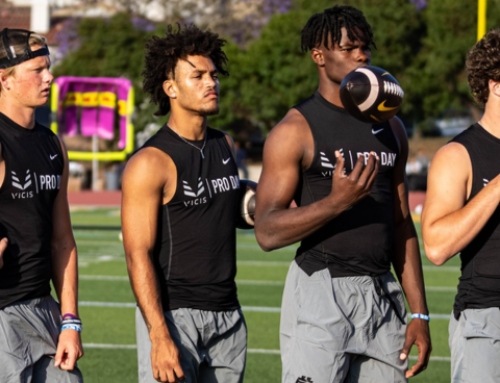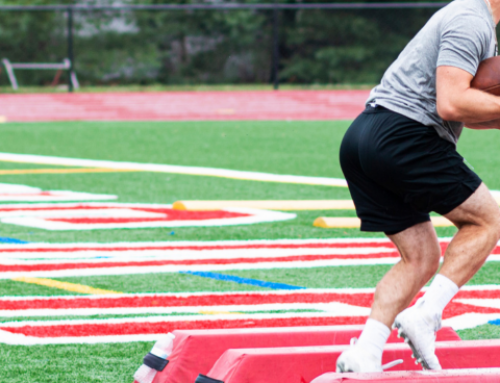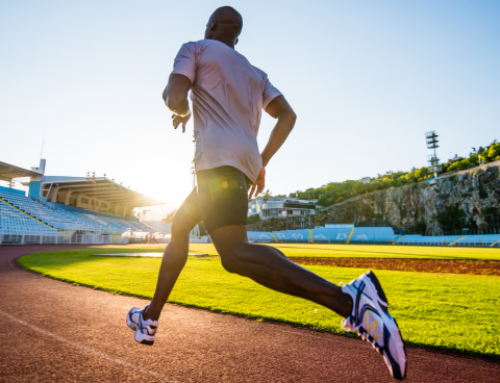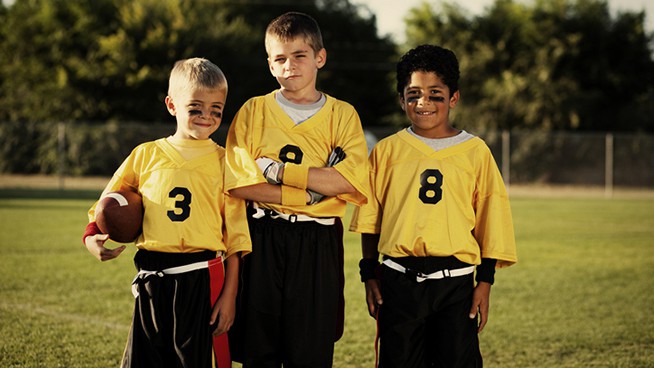Essentials of Spring Football Training

AP Images
Dozens of football coaches run their athletes into the ground during the spring to get them into “shape.” The problem is they are so far away from the competitive season, excessive amounts of conditioning will rob their athletes of the strength, power and speed they need in the fall.
Instead of heavy conditioning, spend the spring working on movement ability and speed training, which are the essentials of football training. Speed takes much longer to develop than endurance, and before you can work on speed endurance, it is important to work on peak speed, acceleration and power.
The spring is the perfect time to begin building the fast and physical athletes that a team needs to win football games.
Here is a timeline for movement training in the spring:
- March: Movement efficiency, linear speed, multi-directional speed, practice
- April: Movement efficiency, linear speed, multi-directional speed, practice, scrimmages
- May: Reactive speed (linear), advanced multi-directional speed drills
Strength and Movement
In the early spring, it is important to reset movement patterns in the weight room to decrease injury risk and rebuild athletes’ bodies following a long and hard football season.
Most coaching staffs throw athletes right back into a hard strength program and immediately attack heavy weights. While strength is important and necessary, if athletes build strength upon faulty movements, issues will arise as the season approaches that can lead to serious injuries and lost playing time.
In the early spring, it is important to focus on:
- Soft tissue work (foam rolling, massage)
- Movement patterns (corrective exercise, technique emphasis, physical therapy)
- Stability (core function, balance)
- Mobility (ankle, hip, shoulder)
Placing early emphasis on these areas will improve athletes’ gains in the spring/summer, decrease injury rates and emphasize proper instruction over a “more is better” approach.
Coaches and athletes should focus on creating stability before mobility. Increased mobility with insufficient stability can lead to injury as athletes reach unsafe ranges of motion for their current motor control.
Here is a timeline for strength training in the spring:
- February/March: Tissue quality, movement patterns, technique, general preparation training, stability, mobility
- April: Strength/muscle building
- May: Strength/maximal strength
Power Training
Spring is the time to establish a proper progression for power training. It’s more than doing Power Cleans and Box Jumps. Teaching athletes how to explode laterally, how to jump from one foot to another, and how to deal with decelerating powerful movements are all important factors in the spring.
Do not merely regard power training as the ability to generate tremendous force into the ground, but also as the ability to generate tension quickly in order to store and use force and not have force negatively impact the body.
Depth Drops teach athletes how to properly land and store energy for improved power and speed. Learning to absorb force in a variety of movements also helps reduce injury.
Teaching the body to absorb force also has an important injury-reduction component. If an athlete isn’t prepared to deal with force in a variety of movements, he can be exposed to increased injury during a football game. Often athletes tear an ACL in a non-contact injury due to improper utilization and absorption of force.
A proper power program not only enhances athleticism, it conditions the body for the speed and aggressive nature of football.
Here is a timeline for power training in the spring:
- March: Depth Drops (double leg), Power Skips, Olympic lift technical drills, Box Jumps, Med Ball Drills
- April: Single-Leg Hops, Bounding, Olympic Lifts, Skater Jumps
- May: Double contact jumps, Olympic lifts, Depth Jumps, Reactive Jumps
Spring football training sets the stage for players to maximize their summer training and prepare for the season. With a smart and progressive plan that builds on itself and establishes a variety of movements, strength, power and speed, you can enhance your athletic ability while reducing injury risk.
Read More:
RECOMMENDED FOR YOU
MOST POPULAR
Essentials of Spring Football Training

AP Images
Dozens of football coaches run their athletes into the ground during the spring to get them into “shape.” The problem is they are so far away from the competitive season, excessive amounts of conditioning will rob their athletes of the strength, power and speed they need in the fall.
Instead of heavy conditioning, spend the spring working on movement ability and speed training, which are the essentials of football training. Speed takes much longer to develop than endurance, and before you can work on speed endurance, it is important to work on peak speed, acceleration and power.
The spring is the perfect time to begin building the fast and physical athletes that a team needs to win football games.
Here is a timeline for movement training in the spring:
- March: Movement efficiency, linear speed, multi-directional speed, practice
- April: Movement efficiency, linear speed, multi-directional speed, practice, scrimmages
- May: Reactive speed (linear), advanced multi-directional speed drills
Strength and Movement
In the early spring, it is important to reset movement patterns in the weight room to decrease injury risk and rebuild athletes’ bodies following a long and hard football season.
Most coaching staffs throw athletes right back into a hard strength program and immediately attack heavy weights. While strength is important and necessary, if athletes build strength upon faulty movements, issues will arise as the season approaches that can lead to serious injuries and lost playing time.
In the early spring, it is important to focus on:
- Soft tissue work (foam rolling, massage)
- Movement patterns (corrective exercise, technique emphasis, physical therapy)
- Stability (core function, balance)
- Mobility (ankle, hip, shoulder)
Placing early emphasis on these areas will improve athletes’ gains in the spring/summer, decrease injury rates and emphasize proper instruction over a “more is better” approach.
Coaches and athletes should focus on creating stability before mobility. Increased mobility with insufficient stability can lead to injury as athletes reach unsafe ranges of motion for their current motor control.
Here is a timeline for strength training in the spring:
- February/March: Tissue quality, movement patterns, technique, general preparation training, stability, mobility
- April: Strength/muscle building
- May: Strength/maximal strength
Power Training
Spring is the time to establish a proper progression for power training. It’s more than doing Power Cleans and Box Jumps. Teaching athletes how to explode laterally, how to jump from one foot to another, and how to deal with decelerating powerful movements are all important factors in the spring.
Do not merely regard power training as the ability to generate tremendous force into the ground, but also as the ability to generate tension quickly in order to store and use force and not have force negatively impact the body.
Depth Drops teach athletes how to properly land and store energy for improved power and speed. Learning to absorb force in a variety of movements also helps reduce injury.
Teaching the body to absorb force also has an important injury-reduction component. If an athlete isn’t prepared to deal with force in a variety of movements, he can be exposed to increased injury during a football game. Often athletes tear an ACL in a non-contact injury due to improper utilization and absorption of force.
A proper power program not only enhances athleticism, it conditions the body for the speed and aggressive nature of football.
Here is a timeline for power training in the spring:
- March: Depth Drops (double leg), Power Skips, Olympic lift technical drills, Box Jumps, Med Ball Drills
- April: Single-Leg Hops, Bounding, Olympic Lifts, Skater Jumps
- May: Double contact jumps, Olympic lifts, Depth Jumps, Reactive Jumps
Spring football training sets the stage for players to maximize their summer training and prepare for the season. With a smart and progressive plan that builds on itself and establishes a variety of movements, strength, power and speed, you can enhance your athletic ability while reducing injury risk.
Read More:
[cf]skyword_tracking_tag[/cf]










